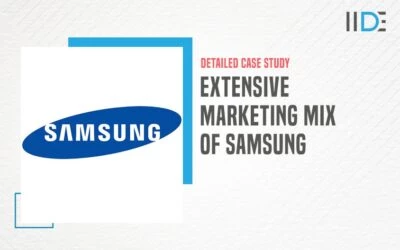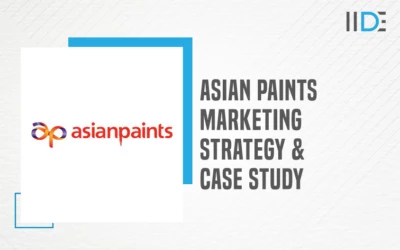Impact Of GST on Digital Marketing Services
The Goods and Services Tax (GST) is all set to take up the stage in a few weeks. While GST will affect all industries differently, there is a unanimous vote by all Indians that GST is better for India’s economy in the longer run. Let’s look at the impact of GST on Digital Marketing Services and the digital marketing industry in particular to see how we in the industry will gain or lose from it.
Input Credit
Currently, advertising spend is considered as a manufacturing expense that is subject to sales tax and VAT. Thus, no input credit is available and advertisers are incurring huge losses. However, in the post-GST era, expenses incurred on advertising will be available for input credit of 18% on taxes paid on advertisements. This is great news as it will help cut down advertisers’ losses.
Advertising Cost
GST is essentially a tax only on the value addition at each stage. A unified GST chargeable through the supply chain should significantly mitigate the cascading impact of tax and thereby reduce the cost of creating an ad.
Advertising Spend
As advertising costs will go down, so advertising spends will rise. A report released by Kotak Mutual Fund states that the companies which will gain from the lower cost of creating a creative will likely plow back the savings into advertising again. This will increase ad spending by about 10% or more than Rs 5,000 crore for the year 2017-18.
Service Tax
Service tax is going to be set at 18% – that’s 3% higher than what the industry is paying today. While some may find this increase troublesome, the reality is that with input credit available, the 3% hit will not significantly impact advertising spends.
Teething Problems
As with any new reform, brands and individuals will face some implementation and teething problems for the first 2-3 months. While bigger brands may already have prepared themselves for GST, smaller brands may adopt a wait and watch strategy causing them to incur a few losses during the initial period.
Digital Costs
It is important to take note of the equalization levy or ‘Google tax’ directed towards foreign multinational digital companies like Facebook, Google, Yahoo, Twitter, etc from June 1st, 2017. The levy may drive up costs for advertisers in the country, with the digital companies expected to pass on the tax cost. The equalisation levy may soon be charged on services offered digitally like online collection of payments, website hosting, design and creation of websites, email, blogs, radio and television advertising, online sale of goods and services that include software, movie and song downloads, books and games, and even online consumption of news. This might affect companies that sell hosting, website development, bulk emails, online advertising, etc
When it comes to social media marketing, Facebook has stated that for advertisers in India, it is necessary to update the business’s Facebook ad account settings with the GST registration number before continuing to advertise on Facebook. However, no GST will be charged to the costs of Facebook Ads. With respect to other social platforms, it will be wise to keep an eye on what their new prices are and when they start levying GST.
GST On Advertising Agencies – Gainers or Losers?
Being a service industry operating in multiple states, GST will bring in some form of complexity due to the sheer number of registrations and returns to be filed. The agency will have to charge clients SGST and CGST or IGST depending on where the client comes from. For example: Let’s say an advertising company in Bangalore provides services to a client in Bangalore for Rs 1,00,000. Here’s a breakup of the invoice:
Charges – 1,00,000
SGST @ 9% – 9000
CGST @ 9% – 9000
Total – 1,18,000
Now, if the same advertising company in Bangalore provides services to a client in a different state, say for instance Mumbai, then the invoice will be:
Charges – 1,00,000
IGST @ 18% – 18,000
Total – 1,18,000
Advertising Agencies will also have to figure out from where they will fund the 3% tax increase. Charge higher prices to clients or reduce the amount of production? Since every brand would want to keep their advertising budgets intact, agencies might feel a bit of a pinch for the first few months before everything eventually smoothens out in the long run.
To conclude, while the overall tension is palpable across all industries, it is an exciting and revolutionary period in India that all industries will eventually benefit from. The Digital Industry, in particular, will generate an enormous amount of revenue benefit thanks to all the points mentioned above.
Sources:
https://www.adageindia.in/advertising/how-gst-will-impact-the-indian-advertising-industry/articleshow/58673466.cms
https://bestmediainfo.com/2016/08/dipstick-will-gst-affect-the-media-and-entertainment-industry/
https://bestmediainfo.com/2017/06/e-y-report-how-gst-will-impact-ad-spends-across-categories/
https://articles.abilogic.com/149201/gst-implementation-likely-effect-digital.html
https://www.gstindia.com/rules-for-tax-on-online-ads-released/
https://economictimes.indiatimes.com/small-biz/policy-trends/google-tax-will-vex-indian-startups-more/articleshow/52528393.cms
https://www.quickbooks.in/r/money-finance/will-gst-change-way-business-find-now/
https://www.facebook.com/business/help/735697126483994







This post very helpful for us, valuable content. Keep posting.